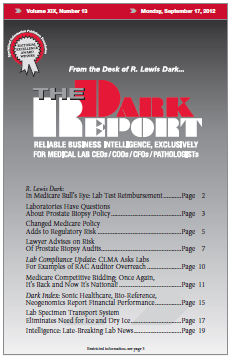IN RECENT WEEKS, two of the nation’s larger public laboratory companies issued their earnings reports. In both cases, revenue growth was strong, a distinct difference from the recent financial performance of their two largest lab public company competitors. It was on August 21, 2012, when Sonic Healthcare, Ltd., of Sydney, Australia, issued its financial performance …
Sonic Healthcare, Bio-Reference Report Financial Performance Read More »
To access this post, you must purchase The Dark Report.


